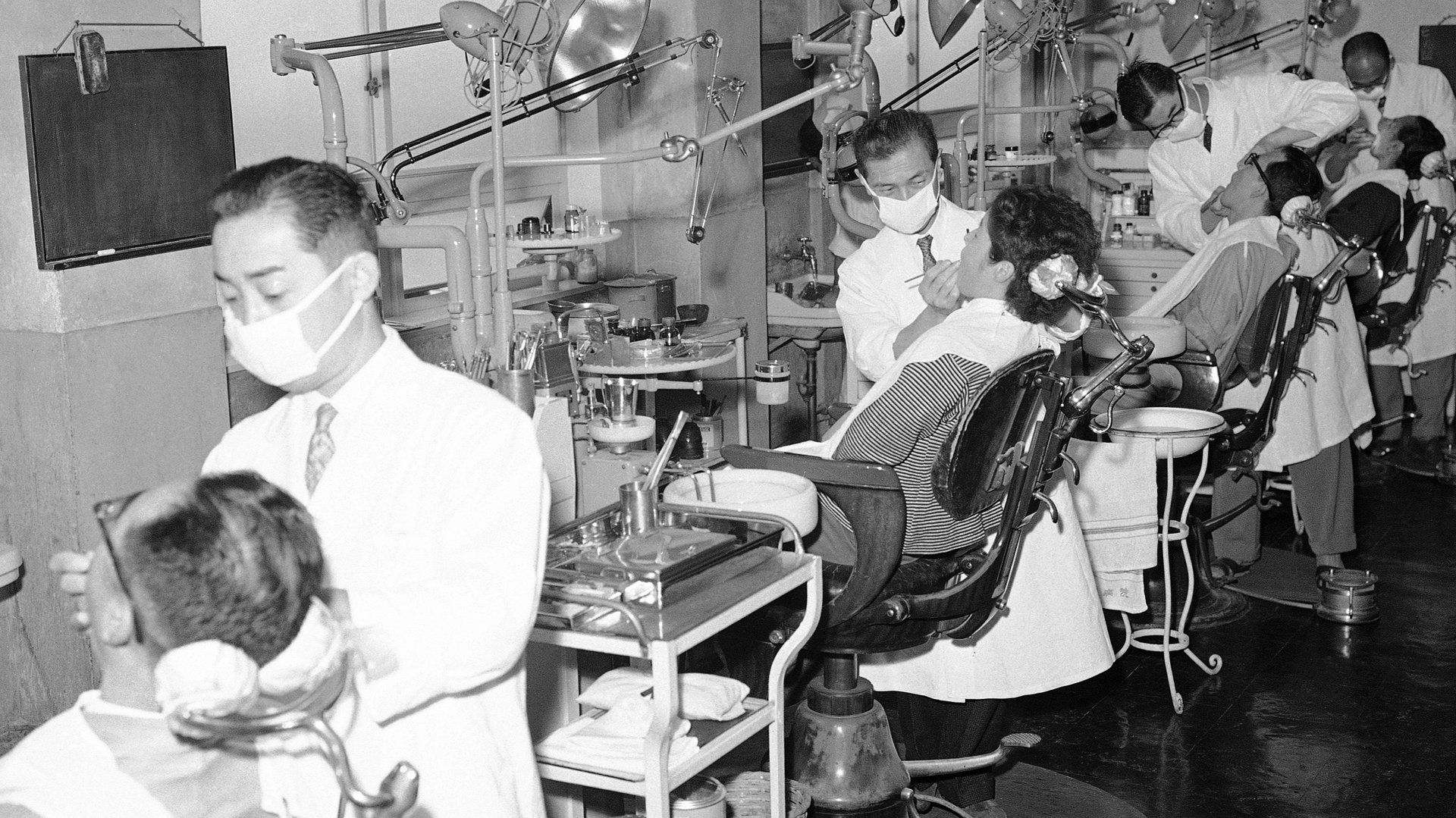So many people are afraid of going to the dentist psychologists don’t know how to quantify it
No one likes going to the dentist, but some people really hate it.


No one likes going to the dentist, but some people really hate it.
“It is not easy to give over control to someone who is going to crawl inside your mouth and do some work, in your mouth, where you breathe and swallow,” Sandy Abrahamson, a nurse practitioner in Washington state, told the Washington Post.
Abrahamson herself had such severe fear of going to the dentist she put off treatment for a painful tooth for years, until it rotted in her mouth and needed to be removed entirely. She’s in good company—some estimates suggest close to 60% of people have anxiety about going to the dentist, and about 5-10% of people have “dental phobia,” an actual condition in the current Diagnostic and Statistical Manual of Mental Disorders. Usually dental anxiety—or dental phobia, which is an acute, intense fear—manifests as avoidance of the dentist, and when patients do finally book an appointment, they may have trouble sleeping the night before, and sometimes cry or can’t breathe once in the exam room.
Naturally, dentists want their patients to visit them regularly, so they’ve tried to come up with ways to ease dental anxiety. But in order to test whether a particular intervention, like therapy or sedation, works, they have to agree on a way to measure anxiety before and after.
Since 1969, scientists have developed no less than seven dental anxiety questionnaires and scales:
- Corah’s Dental Anxiety Scale (DAS)
- Kleinknecht’s Dental Fear Survey (DFS)
- Stouthard’s Dental Anxiety Inventory
- Weiner’s Fear Questionnaire
- Fear of Dental Treatment Cognitive Inventory
- Modified Dental Anxiety Scale (MDAS).
- Index of Dental Fear and Anxiety (IDAF-4C+)
Psychologists and dentists can’t agree on which of these works best to evaluate treatments. In a 1993 review (paywall) of the six oldest questionnaires (the IDAF-4C+ was introduced in 2010) researchers concluded Kleinknecht’s DFS is best—but also that it’s generally better to use multiple surveys. Practically, this would mean that in addition to filling out a survey including questions about whether or not dental work causes perspiration, muscle tension, or nausea (like in the DFS), patients would also answer questions asking them to rank whether they are “not anxious” to “extremely anxious” in various dental scenarios, like drilling or being injected with anesthesia (like in the MDAS).
The obvious next step would be to combine all of these questions onto one ranking system—but disagreement on how exactly to do so is likely what prompted scientists to create so many the first place. It could be that each of these scales has their own strengths; some may be able to highlight specific anxieties, such as a fear of certain procedures like anesthesia or drilling, while others focus on a more general fear of the dentist.
The good news is that despite the confusion when it comes to measuring dental anxiety, teams of psychologists and dentists can work with patients to help them overcome their fears regardless of how they score on these tests. At the Dental Fears Clinic at the University of Washington, for example, patients can receive a combination of therapy and sedation to help them feel more comfortable at the dentist. And psychologists at King’s College London have found that just five sessions of cognitive behavioral therapy can help patients overcome their dental fears.
It’s an obscure field of work, but it benefits both parties. Dentists get to treat more patients, and more patients have healthier teeth. And it gives some dentists the opportunity to overcome their own fears—one 2012 study found that about 28% of dental students themselves were prone to dental anxiety.